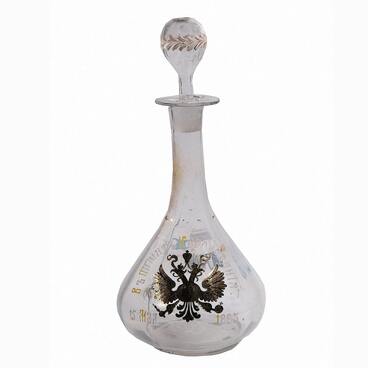Until the 17th century, Russian artists usually created religious works: icons, fresco paintings, mosaics. But then the century witnessed the appearance of parsuna — secular portraits in the icon painting technique. They were created on wooden boards with tempera based on eggs. During Peter the Great’s reign, paintings in the European manner — oil on canvas — became popular in the Russian Empire.
The provincialists preferred traditional biblical scenes even in oil painting. Such works were not viewed as icon paintings but rather as historical and moralistic ones. Canvases depicting Noah and his sons were especially popular.
The painting from the museum’s collection is also dedicated to Noah and his children: Shem, Japheth and Ham. The subject of a picture refers to the biblical text: according to a legend, when Noah’s Ark came to rest near Mount Ararat, the holy man planted vineyards. One day he drank wine and fell asleep in his tent without clothes. His youngest son Ham saw his naked father and laughed at him,
The provincialists preferred traditional biblical scenes even in oil painting. Such works were not viewed as icon paintings but rather as historical and moralistic ones. Canvases depicting Noah and his sons were especially popular.
The painting from the museum’s collection is also dedicated to Noah and his children: Shem, Japheth and Ham. The subject of a picture refers to the biblical text: according to a legend, when Noah’s Ark came to rest near Mount Ararat, the holy man planted vineyards. One day he drank wine and fell asleep in his tent without clothes. His youngest son Ham saw his naked father and laughed at him,



